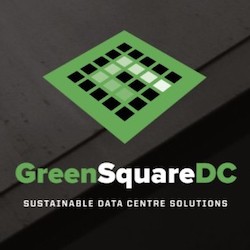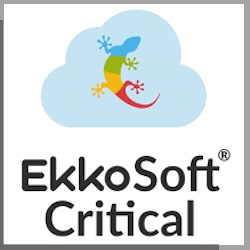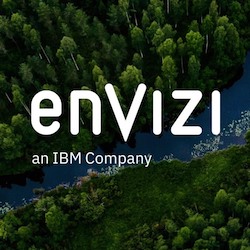Sustainability isn't just a regulatory burden. It's also not just about extra risk assessments and increased cost. In fact, there can be a considerable commercial upside for those insurers who are aligning and developing their environmental, social and governance (ESG) product portfolios.
How is your Insurance firm going to benefit commercially from ESG?
The commercial upside is in large part because demand for ESG-conscious products continues to grow, both from individuals eager to align their financial products with their environmental and ethical values, and also from corporate customers looking to manage their own Scope 3 emissions.
Some insurers are already taking advantage of this opportunity. In this short blog, we set out what ESG product alignment might mean, what some of the leaders are doing, and based on our experience in this space, we provide some tips that can help make it a success.
So why invest in ESG product alignment? Insurers are likely to grow premiums and profits by becoming more attractive to ESG-conscious customers, and at the same time, those ESG-conscious customers should help reduce an insurer’s insured emissions, which can in turn attract inward investment and ESG-conscious customers. A powerful virtual circle.
So what does aligning products with ESG mean for Insurance companies?
There are two aspects to consider in the short to medium term:
- What your customers want. Customers typically fall into two groups — those who are looking for insurance products that will have a positive effect on global ESG factors, and those who require insurance for new risks that have emerged as part of ESG. This latter group is more relevant for non-life products.
- What the regulators require. Sustainability taxonomies and regulatory product naming conventions are fast-developing spaces globally . There are already a number of taxonomies across the globe, of which the EU sustainable taxonomy is one of the more mature, and a number of product naming and disclosure requirements already in play, including the EU Sustainable Finance Disclosure Regulation. This space is expected to continue to develop, both geographically and in product coverage.
In reality, ESG product alignment can depend on the product line. On the life and investment side, this could mean offering sustainable investment opportunities within product wrappers. On the non-life side, new environmentally friendly products are bringing different risk exposures: electric vehicles can be more expensive to repair, and the production from new green energy sources can require innovative risk transfer solutions.
How are the leaders leading?
Life insurers and a number of non-life insurers have already made good progress in this area. On the product development side, leading insurers are identifying which key ESG product features to incorporate while simultaneously examining existing products to identify potential ESG risk. It’s not an easy process. In part, it is influenced by the local sustainable taxonomy and regulations. The features and risks also vary considerably depending on the insurance product. For example, in the life segment, insurers are creating higher-quality ESG investment fund options which include sound due diligence criteria for investments and also significant eco-sustainable and sustainable assets. For European life insurers, the analysis of principal adverse impacts on sustainability is becoming increasingly important both for the due diligence and for the on-going monitoring of investments.
In the retail non-life segment, leading insurers have launched a number of new product lines, including those that promise to invest a proportion of premium or policyholder reserves into impact ESG investments which positively improve global ESG factors. In addition, there is an emerging focus on claims with new due diligence rules assessing ESG credentials for their claims supply chain partners. An example of this is car insurers who are working with their repair facilities to help them transition to greener energy sources — this is helping them provide a better product and reduce their Scope 3 emissions at the same time. In the specialty non-life space, insurers are developing new risk transfer mechanisms to support emerging green infrastructure projects such as green hydrogen production, which will require innovative risk transfer mechanisms to better attract inward financial investment.
At the same time, ESG requirements and technologies are evolving. And leading insurers are building capabilities to pivot and adapt as the market changes. Those that invest into product innovation early will likely improve their efficiency in this space and benefit from better premium growth and lower expense ratios going forward.
As we move forward, insurance policyholders’ ESG scores will become increasingly useful indicators to help non-life insurers implement ESG strategies to both reduce “insured” emissions and to target specific ESG-profile business. We believe that policyholder ESG data will be used to directly influence risk pricing in the future.
A key question for your organization to ask is: how are we going to benefit commercially from ESG?
Six tips to help insurers with ESG product and alignment strategies:
- Product line ESG strategy: The approach will be different by product. For example, life products will need strong due diligence of investments according to their ESG rating and the sustainable credentials of the underlying assets, and non-life business will have to take more account of the ESG status of supply chain partners. The product strategies should, of course, be consistent with the overall firmwide ESG strategy.
- Consistency across the business: Insurers should define clear policies to help ensure a consistent approach across the business and should ensure that products and investments are consistent with their organization’s overall sustainability agenda and targets; for example, the Net Zero Asset Owner Alliance (NZAOA) and Net-Zero Insurance Alliance (NZIA) targets.
- Regulatory compliance: Regulatory breaches and greenwashing should be avoided, but leading insurers are also carefully examining the existing regulations to help identify existing features and products that may qualify under product sustainability guidelines. Insurers with products in the EU, for example, are looking at the EU’s Green Taxonomy Regulation and the Sustainable Finance Disclosure Requirements (SFDR). Other territories are developing their own taxonomies and SFDR equivalents that must be understood.
- Strong and dynamic testing: To help avoid regulatory censure or help maximize financial return, ESG products should undergo a robust product approval process. However, ESG is a fast-changing field as taxonomies and product naming conventions mature; for example, for an insurance-based investment product, the qualification as a “sustainable product” must be confirmed over time on the basis of the effective proportion of sustainable underlying assets.
- Think commercially: While there is money to be made with ESG products, profit prospects may also improve in less ESG-conscious areas which may become “stranded” if the insurance market rushes to focus on ESG. Also, for the financially oriented customer, ESG-orientated products may not generate the best investment returns and may impose additional costs which can drive up premiums.
- Data and analytics: Identify ESG data sources (e.g. ESG ratings and principal adverse impact indicators) and assess their quality and provenance given that they may be the basis of your annual sustainability report. A centralized, dynamic data and analytics platform can help here.
Co-authored by Nicholas Todd and Lisa Sparapan (pictured top of page) of KPMG. Read more KPMG blogs here. More: Read all guest blogs here.




